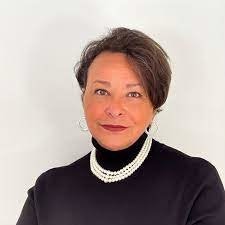Across the country, state legislators have been debating—and in several cases passing—legislation that censors teaching and learning, threatens academic freedom, and limits or eliminates diversity, equity, and inclusion offices and efforts both on and off campuses. Missing in the narrative and discussion are the stories we see on our campuses and in our communities, in action every day. Stories about diversity professionals doing vital work to support the strategic mission of colleges and universities and create a better future for us all. Paulette Granberry Russell
Paulette Granberry Russell
As proponents of the “public purposes of higher education,” we focus on ways campuses can and must use their power, knowledge, and resources to create mutually beneficial partnerships that fuel our dynamic economy, foster thriving communities, and strengthen our diverse democracy. The National Association of Diversity Officers in Higher Education leads the national and international conversation on diversity, equity, and inclusion in higher education, working to ensure inclusive excellence thrives at the core of colleges and universities. Campus Compact supports higher education institutions to build the knowledge, skills, and capacity needed to be community and civically engaged. Each grounded in a social justice mission, we collectively seek to build communities that work for everyone—fighting to alleviate poverty, providing relief for food and housing insecurity, creating solutions to address public health concerns, and ensuring a high-quality education is accessible and possible for all.
Community engagement requires a holistic and campus-wide approach. Students, senior leaders, community partners, community-engaged scholars and staff, and diversity professionals are all important members of the team. Diversity leaders advance mission-driven efforts through highly specialized knowledge, expertise, and skills necessary for higher education to achieve the educational benefits of diverse learning and working environments. They understand the impact of systems on underrepresented groups and ensure diverse viewpoints are encouraged, acknowledged, and respected. As a result, our institutions prepare all students for participation in a diverse society through inclusive and culturally relevant curriculum; provide students with opportunities for engagement and dialogue which is foundational to a healthy democracy; support academic freedom for faculty; and address the economic, social, and policy issues of the community in which the institution is located, and foster community engaged learning and partnerships that benefit these communities and beyond. Because of these experiences, our students build active listening, bridge building, communication, critical thinking, and empathy – essential skills for building thriving workplaces, communities, and families.
 Bobbie Laur
Bobbie Laur
Paulette Granberry Russell is president of the National Association of Diversity Officers in Higher Education (NADOHE).
Bobbie Laur is the president of Campus Compact.





















